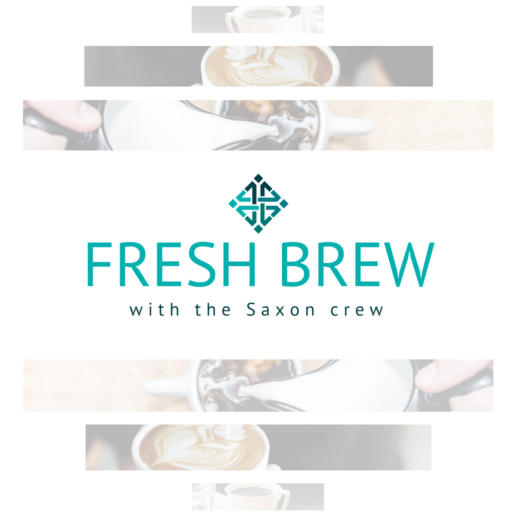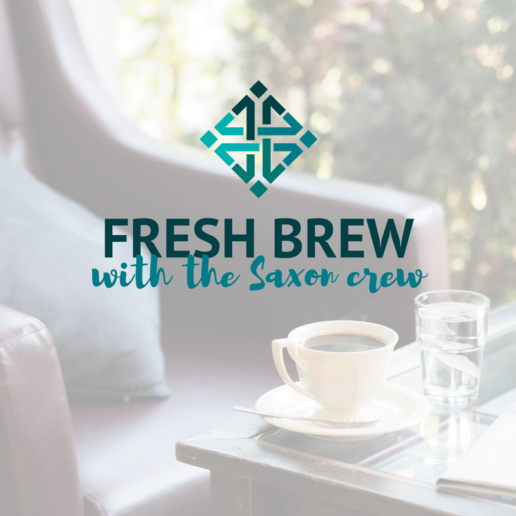Level-funded plan uptake trickling down market
What are level-funded plans, and why are they becoming so popular? Allow this article to break down the facts for you.
A brighter light is being cast on level-funded group health plans as benefits decision-makers tackle open-enrollment season. Several industry observers say the trend is more pronounced given that the Affordable Care Act remains largely intact — for now.
There has been an ebb and flow to these self-insured underwritten plans over the past 18 months, says Michael Levin, CEO and co-founder of the healthcare data services firm Vericred. But with a fixed monthly rate for more predictability, he says they can drive 25% to 35% savings relative to fully-insured ACA plans that must comply with the medical loss ratio for a certain segment of the market.
Level funding typically leverages an aggregate and/or specific stop-loss product to cap exposure to catastrophic claims. These plans are offered by an independent third-party administrator or health insurance carrier through an administrative-services-only contract.
It’s best suited for companies with a very low risk profile comprised of young or healthy populations, according to Levin. And with low attachment, stop-loss coverage in most states, he explains that the plans have “very little downside risk from the group’s perspective.” Two exceptions are California and New York whose constraints on the stop-loss attachment point “essentially preclude level-funded plans from being offered” there, he adds.
The arrangement is trickling down market. “We’ve heard from carriers that will go down to seven employees, plus dependents, while others cut it off at 20 or 25,” he says.
David Reid, CEO of EaseCentral, sees a “resurgence of level funding” across more than 38,000 employers with less than 500 lives that his SaaS platform targets through about 6,000 health insurance brokers and 1,000 agencies. His average group is about 30 employees.
He’s also seeing more customers using individual-market plans rather than group coverage through Hixme’s digital healthcare benefits consulting platform. Under this approach, health plans are bundled with other specific types of insurance and financing as a line of credit to fill coverage gaps. Employer contributions are earmarked for individual-market plans, which are purchased through payroll deduction.
Read further.
Source: Shutan B. (17 November 2017). "Level-funded plan uptake trickling down market" [Web Blog Post]. Retrieved from address https://www.employeebenefitadviser.com/news/level-funded-plan-uptake-trickling-down-market?feed=00000152-175e-d933-a573-ff5ef1df0000
Fresh Brew: Brianna Matchett Loves Alreddy Cafe
Welcome to our brand new segment, Fresh Brew, where we will be exploring the delicious coffees, teas, and snacks of some of our employees! You can look forward to our Fresh Brew blog post on the first Friday of every month.
“Loving what you do everyday is key.”
Brianna Matchett loves working as the Marketing Coordinator at Saxon Financial Services.
She was born and raised here in Cincinnati, Ohio and loves the outdoors. When she’s not working, she enjoys exploring the city of Cincinnati and spending time with friends and family. Her favorite hobbies include staying in and watching movies with popcorn and taking on new challenges.

Favorite Brew
Chai Tea Latte
“I love grabbing my favorite brew from my local coffee shop, Alreddy Cafe.”
Favorite Snack
BLT
“Mmm…BLT with two eggs from Alreddy Cafe goes perfectly with my latte.”
Top 10 Corporate Wellness Habits to Adopt During 2018
With the New Year in full swing, you may be considering how to turn your life around for the better - drop pounds, kill unhealthy chocolate addictions, quit binging every Netflix season ever, etc... But what about making lasting habits within the workplace?
Too often, we make a list of resolutions, and we forget where we spend most our time. Work is work, but that doesn’t mean we can’t implement some of the changes we make in our personal lives in the workplace, as well.
Today, we thought we’d offer up 10 different ideas for employers (or for employees to offer to their boss) to try and implement within the workplace – from wellness challenges to recess. Try one, combine a few, or do them all! The best part about making resolutions is making them unique to yourself and your company. So, don’t be afraid to get creative!
-
Offer healthy alternatives to traditional junk food items
Just a simple switch of snack foods in the office can cut unnecessary calories! Snacking on healthy items can make mindless snacking not so bad.

-
Offer standing desks
This easy switch will be one of the new year’s trendiest wellness tactics. Select desk options that allow users to easily switch between standing and sitting while working to allow for better blood flow throughout the day.

-
Try a wellness challenge
There’s nothing like some healthy interoffice competition to get people motivated. Select a wellness challenge that is easy and effortless to incorporate into your workplace. This could be a monthly or a weekly challenge, switch it up each month/week to keep things interesting!

-
On-site yoga classes
Another wellness trend that will continue into 2018 is managing stress through yoga. Mindfulness and meditation offer a slew of benefits to help employees relieve stress. Invite an instructor to your office every couple of weeks to guide the team through a yoga class.
-
Celebrate “Wellness Wednesday”
Make hump day something to celebrate and begin to tackle wellness in the office in a manageable way. One day a week can be a gateway to a much healthier lifestyle.

-
Listen to your employees
Survey employees to find out what is working and what isn’t instead of wasting time and energy on things that aren’t engaging your employee population. Use a site like Survey Monkey or Google Forms to create a survey to collect feedback from employees.

-
Participate in a 5K or other group fitness activities
Find a 5K in your community or choose another group fitness activity and cover the entry fee for anyone choosing to participate.
-
Post signs near elevators and escalators encouraging employees to take the stairs instead
Sometimes just seeing this reminder is all the motivation needed to be a little more active!
-
Schedule recess
Pick a 15-minute time of the afternoon for everyone to get away from his or her desk. Go outside, socialize with each other and enjoy some fresh air! Taking walks has also been shown to increase creativity.

-
Reward volunteers
Pay your employees for any volunteer hours up to a certain amount or allot a certain amount of time each month for employees to get away from their desk and get active in the community. Ideas include volunteering at a local food bank or cleaning up a local park, beach, or trail. You’ll benefits from both team building and group physical exercise!
Give one or more of these ideas a try and if they work out for you, let us know! The important lesson here is to remember your work-life is just as important to better as your personal life. When it comes to New Year Resolutions, make sure they encompass every aspect of your life and definitely don’t forget to include your employees in your thoughts.
Stay healthy, have fun, and Happy New Year!
5 Tips For Employers To Earn Respect From Employees
Today, we are going to take a look at how to make respect something that revolves around the workplace. Use these tips to help you identify if you're doing what you need to do to earn and have respect with your coworkers.
In a previous blog (R-E-S-P-E-C-T: How To Earn Respect At Work), I discussed ways employees can earn respect at work. But earning respect shouldn’t be a one-way street – it should also be embraced by employers. Respect isn’t just something subordinates are forced to give managers. It’s a valuable asset for employers to show and earn in the workplace. Earning employee respect isn’t always easy, but when employers find ways to build respect at work, positive benefits ensue. How do you build employee respect at work?
According to Bruce J. Avolio, Ph.D., executive director at the Center for Leadership and Strategic Thinking in the University of Washington’s Foster School of Business, five tips for employers/managers to earn the respect of employees include:
-
- Be authentic: Be an authentic reflection of your organization’s espoused values and principles while promoting transparency and justice.
-
- Promote ‘ownership’: Make all employees feel like ‘owners’ versus ‘renters’, that their voice matters, and that people in positions of power listen to learn and engage with their employees.
- Develop potential: Help each individual feel like they are reaching their full potential and achieving their performance goals by investing in development.
- Create an energized culture: Create a positive climate where your followers’ energy is directed towards winning against competitors versus defending against internal detractors from what you’re trying to accomplish.
- Sacrifice when necessary: Be willing to sacrifice for the greater good of the organization when such sacrifices contribute to everyone’s success.
Bill Mixon, president of Universal Hospital Services, Inc., believes the key to earning employee respect is to empower employees and model the leadership behavior you desire by treating employees with dignity and respect. “If employees respect a person’s leadership, they are more prone to put those same leadership qualities into practice. Empowering employees to make decisions also builds trust. When you show employees you trust their knowledge and skills, you allow them to make smart decisions that benefit the company.”
Developing employee potential is also important. Notes Mixon, “When employees feel valued and appreciated, they take stronger ownership of their work and seek new opportunities to grow in their roles. This not only benefits the employee, but also the company and its customers.”
Howard Behar, retired president of StarbucksCoffee Company, used this same tactic of showing employees they are appreciated to help establish the Starbucks culture, which stresses the importance of people over profits. For example, Starbucks made sure there were no special perks for executives. “All employees are called ‘partners’ and there is no separation in any way of partners and the management team. Outside of pay and stock, every partner gets the same, even the same health insurance. We did this because it was the right thing to do, not because we thought it would help us build respect,” Behar explained.
In addition, the Starbucks management team held ‘open forum’ meetings where any partner could ask anything and they would address it. “It was open dialogue, and I mean really open dialogue during these meetings. If they wanted to debate what I was paid as the president of the company then they could,” said Behar. “No topic was off-limits.”
The management team also included a feedback card in every partner’s paycheck asking for comments on anything that seemed in contradiction to the company’s values and morals – with Behar reading every feedback card submitted. If an executive didn’t live up to the values and morals of the company, the organization would eject that individual. Behar added, “You could get fired a lot faster for not living the values than not achieving the financial numbers.”
Bottom Line: Are you a manager/employer looking to earn the respect of your employees? Then focus on relationships and trust. The foundation for earning respect is establishing good relationships with employees by building trust within the organization. Explains Behar, “If people are feeling trust, they will be more productive, are more willing to take risks, be creative, and solve difficult problems. It doesn’t mean issues won’t arise, but it means you can withstand just about anything because you can talk things through.”
Read the original article.
Source:
Quast L. (17 September 2012). "5 Tips For Employers To Earn Respect From Employees" [Web blog post]. Retrieved from address https://www.forbes.com/sites/lisaquast/2012/09/17/5-tips-for-employers-to-earn-respect-from-employees/#5c3c8a1826ac
7 Ways Your Company Can Lead by Example by Supporting the Lives of Others
Be a business the gives back. In this article, adventure into some great ways to support your community and be a charitable employer.
Business moves the world. So how do you want your company to contribute?
To one degree or another, many of us feel the world today lacks quality leadership. But what better way to fight against that trend than by inspiring greatness in our future leaders? It all begins with leading by example. That’s a tall order, though, and not very specific — so let’s explore seven ways your company can assume thought leadership in the ongoing search for a better quality of life for all.
- Giving Back to the Community
If no person is an island unto themselves, that goes double for companies. We tend to think of our careers as somehow separate from the rest of waking life, but the truth is that communities and businesses are very much intertwined. Communities are responsible for the growth and success of businesses — and the other way around, too.
So? Give back as often as you can to the community that has made your business what it is today. We’ll talk in greater detail in a moment about what corporate citizenship should look like, but just getting that sentiment into your corporate culture and set of values is a great place to start.
- Be a Better Global Citizen
Making your business the source of positive influence in your community is one thing. But how are you being a global citizen?
Some folks in America seem to believe globalization should be feared and fought against, but rational business leaders know better. As the world draws closer together, we’ll be better prepared than ever to tackle some of the problems that affect us all in equal measure. But first we have to recognize our place in the larger global community.
One example would be The Exterior Company, based in Lancaster, PA, which recognizes their role on the global stage by contributing some of their profits to organizations committed to raising the standard of living in the poorer parts of the world.
- Know Your Values
Let’s get philosophical. Do you know what you value, personally? Would an onlooker identify your company as a “principled” one, even if they might not agree with the principles themselves?
The world needs businesses and leaders who know what they believe in. Not so we can blindly agree with them, but because all viewpoints help make the conversation a richer one. Even Hobby Lobby helped improve the conversation surrounding LGBTQ rights in America — even if they are, manifestly, and according to most Americans, standing on the wrong side of the issue.
American consumers wish for and respect companies that take the time to craft cohesive and forward-thinking sets of values. Why not show thought leadership here, and in the process, improve your company’s standing in the public eye?
- Donate Your Time
Money is a very valuable resource. But to many folks who don’t come from privilege, time is an even more precious commodity.
You can help support the lives of others — and lead by example in the process — by committing some of your free time to pro-social pursuits. Think of what would happen in the world if every employer allowed and encouraged their team members to commit some of their billable hours to charity work or another kind of community service.
Think of it like this: Corporate America boasts some of the most gifted and thoughtful people in the world. Folks for whom problem-solving comes naturally. What a shame and a waste it would be if all that talent were used merely to generate profits for private enjoyment.
- Raise the Standard of Living
If you’re new to business, you’ll recognize quickly that the conversation around workers’ well-being has changed in recent years. For example, global competition has thrown into sharp relief the ways that American corporate culture lags behind the rest of civilization. We have not yet joined the consensus on the fundamental right to paid sick leave and parental leave, for example.
There may be no better way to lead by example than to demonstrate how worthy your employees are of living high-quality lives. Your workers are your brand ambassadors — you want them to be able to go out into the world and proudly say their needs are taken care of. This improves the quality of our conversation everywhere.
-
- Raise Your Employees’ Awareness of the World Around Them
With FX Builds, we’ve helped establish a culture within our organization that ties daily excellence to funds-matching for charitable giving. We’ve already helped break ground on schools in distant countries where public education isn’t something that can be taken for granted.
The point, simply, as it is with other entries in this list, is to make your local team more aware of the larger world and to look for ways to live more fully and conscientiously within it. It’s probably easier than you might think. And if you do it thoughtfully, you can leverage the passion your team already brings to the table.
- Focusing on Sustainable Living
According to the scientific community, Earth is experiencing its sixth major extinction event even as we speak. Is that enough of a wake-up call?
It is clear that the individual has failed planet Earth. None of us could reuse enough plastic shopping bags in fifteen lifetimes to reverse the climate change that is already making life difficult in the poorer parts of our planet. And nothing about this is going to improve until we admit there’s a problem and agree on who’s in the best position to make a difference.
That means business leaders must actually lead by example, doing the heavy lifting the individual cannot on their own. It means taking advantage of cheaper-than-ever solar power everywhere you can afford to have it installed. It means not using more paper or other finite resources to do your work than is strictly necessary. It means turning off the computers in your office overnight.
To be perfectly honest, company leaders don’t have to look very far at all to lead the way in sustainable living. And if we can do it in the fight for sustainability, we can do it in every venue that requires decisive, progressive-minded leadership.
If every employer in the world used their resources and influence to help solve this and other crises we face in the world today, the future would be very bright indeed. Word is getting out that pro-social companies — being, after a fashion, like families themselves — are in a truly unique position to change life as we know it for the better.
Read the original article.
Source:
Craig W. (5 December 2017). "7 Ways Your Company Can Lead by Example by Supporting the Lives of Others" [Web blog post]. Retrieved from address https://www.forbes.com/sites/williamcraig/2017/12/05/7-ways-your-company-can-lead-by-example-by-supporting-the-lives-of-others/#786463064bbe
Employers using fast-feedback apps to measure worker satisfaction, engagement
In this article from Employee Benefit Advisors, we take a look at measuring worker satisfaction and engagement through the use of feedback applications. Let us know what your verdict is!
The days of employers conducting employee engagement surveys once every year might be coming to an end.
Thanks to “fast feedback” applications, employers can conduct quick online surveys of their employees to measure how engaged they are at their jobs. The data from these polls is then collated and presented, often in real time on dashboards, to employers to show their workforce’s level of engagement and satisfaction. Some of these web-based programs also can present CEOs with steps they can take to improve their environment and culture.
These tools are available from Culture Amp, Glint, TINYpulse, PeakOn and others.
One of the main benefits of fast feedback, according to Glint CEO Jim Barnett, is that it cuts down on “regrettable attrition,” which occurs when talented employees leave for better jobs.
Glint customers include eBay, Glassdoor, Intuit, LinkedIn and Sky Broadcasting. These clients send out e-mail invitations to workers and ask them to take a voluntary survey, which can feature either stock employee engagement questions or queries that can be fine-tuned for a specific workplace.

Glint recommends 10 to 20 questions per Pulse — what it calls employee engagement survey sessions — and results are sent back to the employer’s HR directors and senior executives. According to Barnett, the Pulses are confidential but not anonymous. Barnett explains that while anonymous surveys do not record the respondent’s name and job title, a confidential survey means that only Glint knows who took the Pulse. The employer is only presented data from specific job groups or job descriptors within an enterprise, such as a production team or IT support.
This month, Glint announced two new capabilities to its real-time employee feedback program, called Always-On and On-Demand Surveys. Always-On allows workers to express their concerns at any time and On-Demand Surveys gives managers and executives the opportunity to perform quick, ad hoc surveys of staffers.
“Some of our companies use the Always-On Survey if they want people on their team to give feedback at any time on a particular topic,” he says.
Firms also use fast feedback for onboarding new hires, Barnett says. Companies have set up Glint’s program to gauge new workers at their 30 and 60 day-mark of their employment to “see how that onboarding experience impacted their engagement,” he says.
Culture Amp also provides fast feedback tools via a library of survey templates that cover a range of employee feedback topics including diversity and inclusion, manager effectiveness, wellness and exit interviews. Culture Amp’s clients include Aligned Leisure, Box, Etsy, McDonalds, Adobe and Yelp.
“We encourage customers to customize surveys to make the language more relevant, and to ensure every question reflects something the company is willing to act on,” says Culture Amp CEO Didier Elzinga.
Culture Amp presents its survey results to employers via a dashboard that displays the top drivers of employee engagement in real time. “Users can then drill down to understand more about each question, including how participants responded across a range of different demographic factors,” Elzinga says.
Sometimes CEOs are presented with news they were not prepared to hear, according to Elzinga. Some customers take to the employee survey process with the mindset of ‘myth busting,’ he says. “They want to know if some truth they hold dear is actually just a story they’ve been telling themselves. Every now and then, an employee survey will provide surprising results to an HR or executive team,” he says. “Whether people go into a survey looking to bust myths or gather baseline data, the important part is being open to accepting the results.”
Glassdoor takes the pulse of its workforce
Glint customer Glassdoor, the online job recruitment site that also allows visitors to anonymously rate their current employer’s work environment, compensation and culture, not only urges its employees to rate the firm using its own tools, the company also uses Glint’s software to view employee engagement at a more granular level.
Glassdoor conducted its first Glint Pulse in October 2016 and has rolled out three since then. The next is scheduled for January 2018, according to Marca Clarke, director of learning and organizational development at Glassdoor.
“We looked at employee engagement and the things that drive discretionary effort [among employees who work harder],” Clarke says. “This is strongly correlated with retention as well.”
Clarke said that one Glint Pulse found that the employees’ view of Glassdoor culture varied from location to location. Of its 700-person workforce, people working in the newer satellite offices were happier than the employees in its Mill Valley, Calif., headquarters. She speculates that this response could be due to newer, more eager employees hired in brand new, recently opened offices.
“People think culture is monolithic that should be felt across the company but we could see that there was some variation from office to office. With Glint, we were able to slice the data not just by region and job function but [we could] go to the manager level to look at how people with different performance ratings think about the culture,” she says.
Recent research from Aon Hewitt found that a 5% increase in employee engagement is linked to a 3% lift in revenue a year later. According to Barnett, Glint clients that regularly conduct surveys and take steps to engage their employees often see a boost in the price of their company shares.
“Companies in the top quartile of Glint scores last year [saw] their stock outperform the other companies by 40%,” he says. “They now have the data and can see that employee engagement and the overall employee experience really do you have a dramatic impact on the result of their company.”
Read the original article.
Source:
Albinus P. (5 December 2017). "Employers using fast-feedback apps to measure worker satisfaction, engagement" [Web blog post]. Retrieved from address https://www.employeebenefitadviser.com/news/employers-using-fast-feedback-apps-to-measure-worker-satisfaction-engagement?brief=00000152-1443-d1cc-a5fa-7cfba3c60000
SaveSave
The 10 Smartest Things To Look For In Every New Hire

Shutterstock
If you’re hiring a new member of your team, congratulations. You have a business that is thriving enough to need more hands. But be prepared, as the shortage of highly skilled workers means finding and retaining quality, creative employees, which can be pretty tough.
According to a 2017 Creative Group study:
• 41% of surveyed advertising and marketing executives say it’s challenging to find creative talent today.
• 52% of advertising and marketing executives say they are concerned about retaining their current creative staff in the next 12 months.
For any company, especially companies that do creative work, the people you hire are your most important asset. So how do you hire the right ones (and avoid the wrong ones)?
It can be easy to become overly focused on things like previous employers, degrees and awards — the stuff that may pique a hiring manager’s interest during the applicant-screening process. But in my decade of experience hiring people for our creative agency, I’ve learned that the key to hiring the right people is starting with a clear understanding of the attributes you want in a new hire: the values, characteristics, personality traits and beliefs that will make them an active agent, not a passive employee.
When you hire someone, you aren’t just adding a body. You are introducing a new element to your culture, your work and your skillset. They will become a conduit for your company’s vision and values, and they will influence — and be influenced by — the people around them, for better or worse. That’s why finding people with the right foundation is everything.
After hiring many roles, both successfully and poorly, I’ve distilled the 10 traits that I think are most important for a new hire — beyond their resume.
1. Hunger: Experience is important and necessary for most roles you hire for. However, you don’t want people who have already accomplished everything and are just looking to coast. The best people want to grow, no matter where they are.
2. Humility: Accomplishments are impressive, but they become less so if someone constantly brags about them. You want to hire team players who want everyone to get the glory (and don’t leave passive-aggressive notes in the kitchen about how the dirty dishes in the sink inconvenienced them). Also, look for people who understand the difference between humility and false humility. To quote C.S. Lewis, real humility is someone who “will not be thinking about humility: he will not be thinking about himself at all."
3. Intelligence (Intellectual And Emotional): Book smarts are good. Street smarts are better. Both are ideal. The best employees have not only the technical ability but also the intuition and common sense to get things done — without oversight — under what are sometimes very stressful circumstances.
4. Self-Awareness: Self-awareness is vital when interacting with other people, whether it’s clients, coworkers or colleagues. Understanding your actions and how they are interpreted and make others feel, is often the difference between being someone who is a pleasure or a pain to work with. The good news is this trait is pretty easy to assess in an interview.
5. Curiosity: An unknown source once said, “Knowledge is having the right answer. Intelligence is asking the right question.” To grow, improve and work more efficiently, you need people who are interested in challenging old paradigms, testing, experimenting and learning. That all comes down to interest and curiosity. Great hires will proactively ask questions and seek out information to make the right decisions or suggest new ideas.
6. Scrappiness: Our company was a bootstrapped startup founded by three broke 20-something guys, so scrappiness is built into our DNA. But it’s an employee trait that benefits any organization. You want people who can get stuff done when things aren’t easy, who can always find a way and who don’t need you to hold their hand.
7. Resilience: Failure and frustrations are inevitable in creative work — even on a daily or weekly basis. People who have defied odds, made interesting career switches or taught themselves new things already come equipped with demonstrated resilience. When you go through a rough patch, as every company does, you’ll be grateful that you have people who are willing and able to weather a storm or two instead of jumping ship at the first sign of difficulty.
8. Flexibility: People who are willing to embrace change, who can dig in and help others out — even when a task isn’t technically in their job description — are the secret to helping a company evolve. At our company, we have many people who’ve held several different positions, some of which span across multiple departments, in just a few years. Their flexibility and knowledge benefits each new team and makes us stronger as a whole.
9. Kindness: No one wants to work with an unpleasant person — even if that person is highly capable. Note, however, that being kind is different from being nice. According to Merriam-Webster, "nice" is defined as: "1. pleasant; agreeable; satisfactory. 2. fine or subtle. 3. fastidious; scrupulous." The same source defines "kind" as: "having or showing a friendly, generous, and considerate nature. Affectionate; loving." Being nice is fine; being kind is absolutely necessary.
10. Passion For What We Do: A truly successful company, no matter the size, is full of people who are invested in the cause, vision and values. Even if you’re a small operation without the same financial resources as your competitors, the only way to build a healthy, happy organization is to hire passionate people who share your vision.
To quote Shafqat Islam, the CEO of NewsCred, in the company's public culture document, under the "People" section, he writes: “This is the only thing that matters — we can screw up in everything else, but if we hire the best people, things will work out. A great team with a bad idea can still execute and make it work. A bad team with a great idea will fail every time.”
Read the original article.
Source:
Ritchie J. (6 December 2017). "The 10 Smartest Things To Look For In Every New Hire" [Web blog post]. Retrieved from address https://www.forbes.com/sites/forbesagencycouncil/2017/12/06/the-10-smartest-things-to-look-for-in-every-new-hire/#30d66c776704
SaveSave
Health Resolutions You Can Stick To In 2018

We ask the experts which resolutions we should be making this year, and how we can actually stick to them.
Whether it's giving up smoking, exercising more, or getting our 5-a-day, most of us have usually given up before January ends.
But with a little help from the pros, you can live a happier, healthier life in 2018...
1. Drink more water
Health and fitness mentor Sarah-Anne Lucas (birdonabike.co.uk) says starting a daily ritual is the answer to New Year resolutions. She suggests drinking more water: "Water intake is massive. Most people do not drink enough, but what we'd all like is more energy. That comes down to what you put in, so increase your water intake. It's the first thing you put in your body in the morning. Go and get yourself a minimum of 100ml water and get it into you. To progress that practice, add lemon, to make the body alkaline. Lemon water is amazing, it also adds a bit of flavour."
2. Learn to meditate
Life-coach and mindfulness practitioner Dr Caroline Hough (aspiring2wellness.com) says we can train our minds to reduce stress, making us more likely to achieve our goals: "It involves sitting and meditating for 20 minutes. Bring yourself into the moment and be aware. That's an awareness of your external environment, so just looking at the flowers and the trees and the sunshine and appreciating it instead of rushing through life. Be aware of your internal environment, by noticing if you're very stressed, for example if you're clenching your muscles. We tend to live our lives at a level of stress which is unhealthy."
3. Start self-watching
Professor Jim McKenna, head of the Active Lifestyles Research Centre at Leeds Beckett University, advises we record our successes to motivate ourselves: "Whatever you want to do, whenever you achieve, write it down. You're trying to achieve it every day, so it needs to be nice and small, and all your job is then is to keep the sequence running. It's really as simple as that. What you're capitalising on there is positive self-regard, but also the fundamental process of self-watching. There's a lot of success in seeing your own achievements. When you collect all that up, you can start saying, 'Actually I've got nearly 10 occasions there when I did well, I'm doing well, I'm someone who can change'."
4. Look after your skin
Louise Thomas-Minns (uandyourskin.co.uk), celebrity skin therapist, recommends we pay more attention to protecting and caring for our skin: "Wash your skin nightly. Not removing make-up, daily dirt, oil, grime and pollutants from the skin every night will result in infections and outbreaks. Your skin regenerates at night too, so give it a helping hand. And don't pick! Picking at your skin will result in scarring and create more spotty outbreaks. Wear SPF every day to slow ageing and protect from the harmful effects of UV rays. Find out your skin type from a skin health expert, so you stop wasting time and money on incorrect products."
Read the original article.
Source:
Go Active (6 December 2017). "Health Resolutions You Can Stick To In 2018" [Web blog post]. Retrieved from address https://www.goactiveincumbria.com/get-started/other/article/Health-Resolutions-You-Can-Stick-To-In-2018-e9f9d40d-ca39-48ed-be2e-b2f88f4061eb-ds
SaveSave
SaveSave
9 things to leave off your LinkedIn
In our rapid-fire digital age, the Internet has completely revamped the way we traditionally look at recruiting. Resumes are sent as PDFs, online portfolios reign supreme, and LinkedIn has become the new Facebook for recruiters in every industry.
Wondering what you shouldn’t include on your LinkedIn profile in order to appear as marketable as possible to potential employers? Read on to find out.
1. Job titles that don’t say what you really do
When trying to describe your previous positions, it works to your advantage to be as precise as possible. That way, recruiters know exactly what your skillset is, and how it might fit into their company.
2. Your age
Unfortunately, some people have reservations hiring someone they think is either too young or too old. Don’t get knocked out of the running for a job by including school graduation years or other age identifiers.
3. Bad spelling, punctuation, and grammar
When writing up descriptions of your responsibilities in each job, take care to avoid punctuation, grammar, or spelling mistakes. Look at it as a test of your writing and communication abilities—highlighted for everyone to see.
4. A goofy profile photo
Unfortunately, some people don’t seem to realize that LinkedIn is not the place to put a goofy or odd profile photo—unless you’re looking for a job at the local comedy club. Spend a little money on getting a quality headshot that will impress those who see it, not make them wonder if you’re a serious candidate.
5. References from previous positions
There’s no reason to include references with phone numbers or contact information on your LinkedIn page. If an employer is really interested in hiring you, they’ll contact you for them directly. However, do encourage people you’ve worked with or for to leave recommendations for you on your LinkedIn profile page. They can really make you stand out from other candidates.
6. Salary or pay
One of the most unprofessional things you can do is include your salary for each position you held at various companies on your LinkedIn profile page. Unless you’re asked, it doesn’t make sense to disclose such personal information on such a public platform.
7. High school jobs
Unless you just graduated from high school, then jobs you had in high school (or earlier!) don’t belong on your professional LinkedIn page. While you may have enjoyed your summer job flipping burgers or mowing lawns, it’s not going to make much of an impression on someone who’s doing the hiring for a position with much greater responsibilities. It’s much better to put your best foot forward by showcasing standout roles in more recent jobs.
8. Personal information
Refrain from adding information about your ethnicity, religious affiliation, political party, or other potentially sensitive or controversial information. Regardless of how open-minded your recruiter may be, saying less is definitely safer than saying too much when you don’t know your audience.
9. Unprofessional posts or memes
Don’t forget that your LinkedIn profile and any posts you make on LinkedIn are potentially going to be viewed by the very person who is going to interview you for your dream job. What do your posts say about you? What about those funny memes (silly cat photos and so forth) that everyone seems to be passing around today? Will they make the interviewer even more excited to make you a job offer, or stay far away?
Read the original article.
Source:
Economy P. (4 December 2017). "9 things to leave off your LinkedIn" [web blog post]. Retrieved from address https://workwell.unum.com/2017/12/9-things-to-leave-off-your-linkedin/
No mat needed: Yoga at your desk
A sticky mat seems de rigueur for modern-day yogis, but that doesn’t mean a long piece of rubber is required to take part in the ancient practice.
Yoga first and foremost is about being present, and it starts with attentive breathing. You can do that anywhere and without props.
Once you’ve got the hang of steady breathing, matching inhales and exhales to movements helps your body relieve tension and your muscles wake up. In fact, the key to the physical practice of yoga is matching conscious breath to movement. It’s also a big part of what makes yoga feel great. Without it, you’d be doing calisthenics.
We’ve rounded up a few yoga exercises you can do easily and safely at work. All require standing – good news, given sitting is pretty bad for us. It’s best to do them with your feet flat on the ground.
Stand with your feet hip-distance apart. Inhale as you bring your arms overhead. Keep your chin level with the ground. Exhale as you soften your knees and twist your torso to the right, letting your head follow and dropping your arms to shoulder-height. Inhale as you turn back to center, lifting your arms overhead. Do the twist to the left. Repeat this pattern several times.
Benefits: Strengthens abdominal muscles, shoulders and upper arms. Stretches back and chest. Lubricates joints of the spine, including in the neck, and shoulders.
Chair
Stand with your feet hip-distance apart, arms at your sides. Inhale as you lift the crown of your head. Exhale as you bend your knees (typically you want to track each knee over the middle of its corresponding foot), like you’re sitting back in a chair. Hinge at your hips, tilting your torso forward up to 45 degrees. Lift your arms to a comfortable height. Inhale as you return to standing, crown lifted, arms lengthening down. Repeat several times.
Benefits: Strengthens front thighs, buttocks, core, upper back and upper arms. Stretches calves and side torso. Lengthens spine. Lubricates joints of the ankles, knees, hips and shoulders.
Triangle
Stand with your feet slightly wider than hip-distance apart, toes pointing same direction as your chest, then turn your right foot 90 degrees to the right, and your left foot about 15 degrees to the right, making sure your left toes point the same direction as your left knee. Inhale as you extend your arms out from the shoulders and lengthen your spine. Exhale as you tilt your torso to the right, releasing your right arm toward your right leg and your left arm up to a comfortable height. Don’t turn your chest toward your right leg. Drop your gaze to the ground if you feel tension in your neck. Hold for several breaths, and repeat with the left leg.
Benefits: Strengthens front thighs, buttocks, side torso and neck. Stretches calves, back thighs and side torso. Lubricates joints of the hips and shoulders.
You can read the original article here.
Source:
Malek M. (2 May 2017). "No mat needed: Yoga at your desk" [Web blog post]. Retrieved from address https://worklife.coloniallife.com/2017/05/no-mat-needed-yoga-desk/?utm_sq=flegx3i374&utm_source=Twitter&utm_medium=social&utm_campaign=WorkLifeTweets&utm_content=Articles













